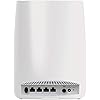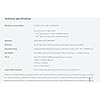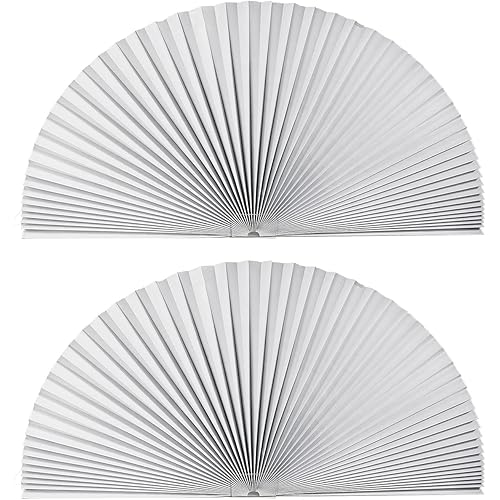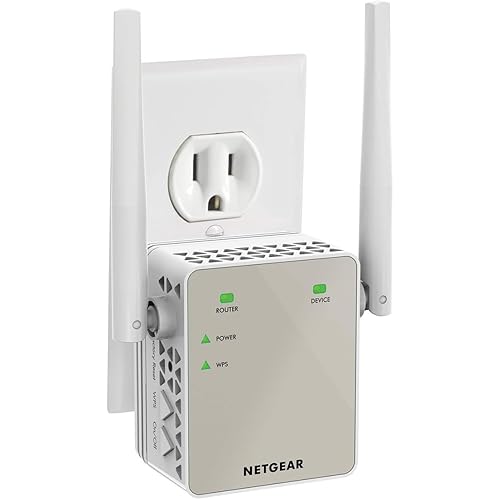NETGEAR Orbi Ultra-Performance Whole Home Mesh WiFi Satellite Extender - works with your Orbi Router to add 2,500 sq. feet at speeds up to 3 Gbps, AC3000 (RBS50)








Buy Now, Pay Later
- – 6-month term
- – No impact on credit
- – Instant approval decision
- – Secure and straightforward checkout
Ready to go? Add this product to your cart and select a plan during checkout.
Payment plans are offered through our trusted finance partners Klarna, Affirm, Afterpay, Apple Pay, and PayTomorrow. No-credit-needed leasing options through Acima may also be available at checkout.
Learn more about financing & leasing here.
Selected Option
This item is eligible for return within 30 days of receipt
To qualify for a full refund, items must be returned in their original, unused condition. If an item is returned in a used, damaged, or materially different state, you may be granted a partial refund.
To initiate a return, please visit our Returns Center.
View our full returns policy here.
Recently Viewed
Style: Add-on Satellite for RBK43S/50
Features
- Only works with an Orbi Whole Home Mesh WiFi Router. Get the fastest speeds by adding to your RBK50
- Eliminates WiFi dead zones and buffering in hard to reach places, adding 2,500 sq. feet of coverage to your existing Orbi Mesh WiFi network with speeds up to 3.0 Gbps
- Single WiFi network name lets you move around the house without losing connectivity
- Creates an ultra-performance Mesh WiFi network that blankets every inch of your home in super fast and seamless WiFi connectivity room to room, wall to wall, floor to floor
- Up to 161% faster than the leading brands, as certified by an independent study, makes Orbi the highest performance Mesh WiFi system on the market
- Maintains speed even as more devices use your WiFi at the same time, thanks to patented tri-band technology
- 4 Ethernet ports provide ultimate flexibility and connectivity for your Smart TV, game console, streaming player, and more
Description
FAST WHOLE HOME SYSTEM - ADD-ON SATELLITE Need more range? No more WiFi boosters or extenders necessary. The Orbi Add-On Satellite extend high performance WiFi to your property from the basement to the backyard. The system smartly manages your WiFi so that each device's access is optimized and never interrupted. Requires existing Orbi WiFi System or Orbi Router ADD UP TO 2,500 SQUARE FEET OF COVERAGE From the home office to the basement to the pool, this wireless internet system covers every inch of your home with a strong WiFi signal. Unlike router and repeater combinations, Orbi covers the whole home with a single WiFi network and name, enabling seamless indoor/outdoor and room-to-room connectivity. TRI-BAND TECHNOLOGY Award winning and patented Tri-Band Technology provides Orbi with a dedicated backhaul connection between the router and the satellite, so the system can manage multiple network connections without compromising speed. Watch movies and TV, play video games, download music, books, and more. QUICK & EASY SETUP Selected as Editors’ Choice by PC Magazine, Orbi works with your current internet service provider and sets up in minutes right out of the box. Use the Orbi app or any web browser to create your entire home’s secure WiFi network in minutes. No personal info, account creation, or hands required with the new Amazon Echo Alexa skill and our intuitive and preconfigured system. GUEST CAPABILITY Allow guests the opportunity to access WiFi while protecting your network and password. Easily create a network to service visitors, and Orbi handles everything else. You'll rest easy knowing that your information is safe from security breaches, viruses, malware, and network worms. - NETGEAR Orbi AC3000 WiFi Router - WiFi Add-On Satellite - High-Performance Tri-Band Technology - Add up to 2,500 Square Foot of WiFi coverage - RBS50.Four (4) high-performance antennas with high-powered amplifiers
Product Dimensions: 6.7 x 3.1 x 8.89 inches
Item Weight: 1.96 pounds
Item model number: RBS50-100NAS
Batteries: 1 Lithium Ion batteries required.
Is Discontinued By Manufacturer: No
Date First Available: September 13, 2016
Manufacturer: Netgear Inc
Country of Origin: China
Frequently asked questions
To initiate a return, please visit our Returns Center.
View our full returns policy here.
- Klarna Financing
- Affirm Pay in 4
- Affirm Financing
- Afterpay Financing
- PayTomorrow Financing
- Financing through Apple Pay
Learn more about financing & leasing here.























